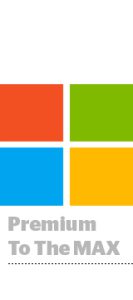 During a presentation at the AppNexus annual Summit last November, Microsoft’s Esco Strong made a promise to beef up its exchange inventory.
During a presentation at the AppNexus annual Summit last November, Microsoft’s Esco Strong made a promise to beef up its exchange inventory.
As of Tuesday, Strong, director of programmatic managements, said that promise had been fulfilled in the form of new mobile inventory being made available in the Microsoft Advertising Exchange (MAX).
Advertisers in the US, Australia, Brazil, Canada, France, Germany, Italy, Japan, Spain and the UK can now bid on Windows Phone and Windows 8 in-app ads. MAX, which is powered by AppNexus, is live in 37 different geographic markets, a number that nearly doubled in the last 12 months.
Strong demurred when asked how much volume the new inventory added into the exchange, saying only that it represents “a significant increase in our supply.” MAX’s supply footprint took a hit when Microsoft replaced Hotmail with Outlook.com last year, but it’s been working to get the numbers back up. With the addition of phone and app inventory, as well as new supply from Outlook and Skype, Strong said MAX is back.
It’s an important move for Microsoft in its bid to remain a relevant player. According to July numbers from comScore, Microsoft’s smartphone marketshare in the US is at just 3.6%.
“This is a business that is largely driven by scale and the need to be able to realize campaign goals at scale,” Strong said. “Not only will the new offering round out advertisers’ cross-screen inventory, but it also represents an overall bump in volume.”
But scale won’t fulfill need without context, which is part of what Strong called “the cross-screen story.”
“Customer decisions and the customer journey is happening on mobile,” he said. “People spend a lot of their time in the phone environment, whether they’re out in retail, they’re traveling or they’re with their tablet in lean-back mode at home, and that’s an opportunity to bring more scale overall, and a different kind of scale, in a single marketplace to reach users in a variety of different contexts where we know they spend a lot of their time.”
Scale takes care of the buy side, but this is also about the publisher, Strong said.
“Microsoft has a very deep and involved history with app developers, so it’s exciting for us to plug them into a place where we know there’s a ton of advertiser activity happening at scale in terms of demand,” he said. “This is the realization of some very big promises we made to those folks to monetize the creative work they’re doing.”
The new mobile inventory will be “premium,” which Strong defined as a combination of brand-safe environments and engaged audiences.
“At a very simple level, we think of premium as the surface areas, contextual areas and branding areas where any advertisers, big or small – although particularly the big image-conscious ones – would be proud to have their ad content show up alongside of,” Strong said. “But secondarily, and perhaps equally as important, we think of premium as a place where there are engaged users, not just passive eyeballs, that provide return for advertisers in terms of click-throughs and conversion rates.
MAX falls under that definition, Strong said.
“Our web properties are well-known and our app marketplaces, including Windows and the phone, are an extension of those quality surface areas where everyone is starved for scale,” he said. “Yes, everyone is searching for more inventory and more volume, but they’re also searching for premium inventory and volume.”
That, Strong said, is partly why it took Microsoft such a long time to get its phone and app inventory to market.
“There are technical challenges in the back end – no cookies, for one thing – and we’ve been thoughtfully working to solve them with input from the buy-side community,” Strong said. “We didn’t want this to just be, ‘Here are some more impressions for you.’”











